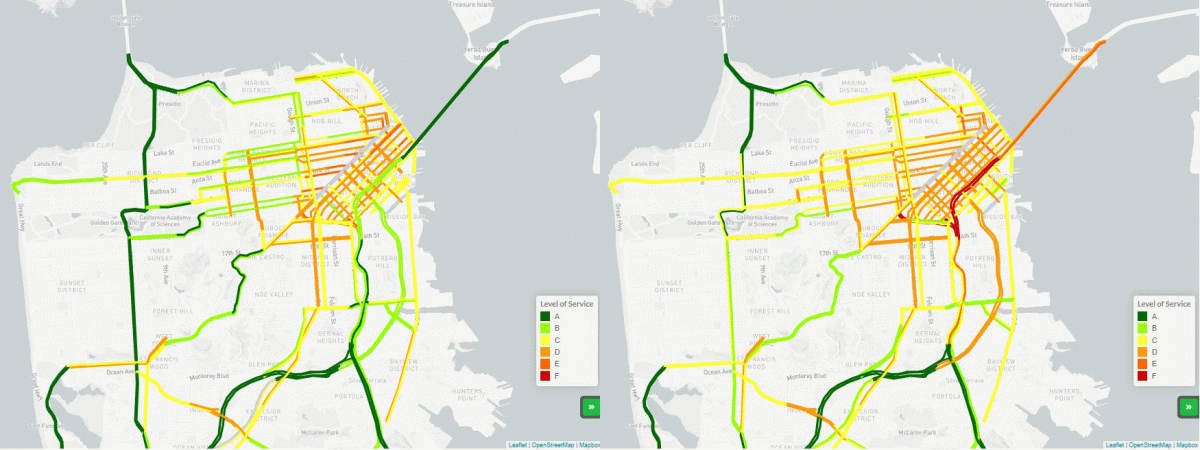By Bradley Dunn

Congestion has increased between March 2020 and September 2020. Find out more about congestion with the San Francisco Congestion Tracker
Before the pandemic, congestion in San Francisco was the worst it has ever been. As the economy has been reopening, traffic congestion has begun to climb. Our partner agency, the San Francisco County Transportation Authority (SFCTA), has released a digital game where you can help manage this traffic congestion by pricing it.
Curbing congestion
As congestion returns, commutes get longer and severe and fatal collisions and climate emissions increase. Low-income communities and communities of color- with high use of public transit, and living in areas with high rates of traffic collisions and air pollution-bear the brunt of the burden of congestion’s impact.
In 2019, the city started to investigate how reduce congestion and congestion’s unwanted and inequitable outcomes by using pricing . Congestion pricing is a tool that has been used successfully by cities around the world to reduce congestion. Like those cities, San Francisco could use congestion pricing to keep traffic moving, increase roadway safety, clean the air and advance equity.
How should congestion pricing work in San Francisco?
The city wants your help to determine the best way to design congestion pricing by providing feedback about potential fees discounts, exemptions or incentives. They are also asking about how you would invest revenue generated by congestion pricing.
To share your thoughts you can:
Play Unclog Fog City
Play a digital game that lets you design your own congestion pricing program.
Complete a survey via text message
For English: Text TRAFFIC to 415-449-4214
For Spanish: Text TRAFICO to 415-449-4214
For Chinese: Text 交通 to 415-449-4214
For Filipino: Text TRAPIK to 415-449-4214
Share with your Friends
Share these opportunities to get involved on Twitter, Facebook, and LinkedIn.
To learn more about the effort visit the Downtown Congestion Pricing Study webpage and sign up to receive email updates.
Published September 26, 2020 at 06:46AM
https://ift.tt/3kT0xBP
Nhận xét
Đăng nhận xét